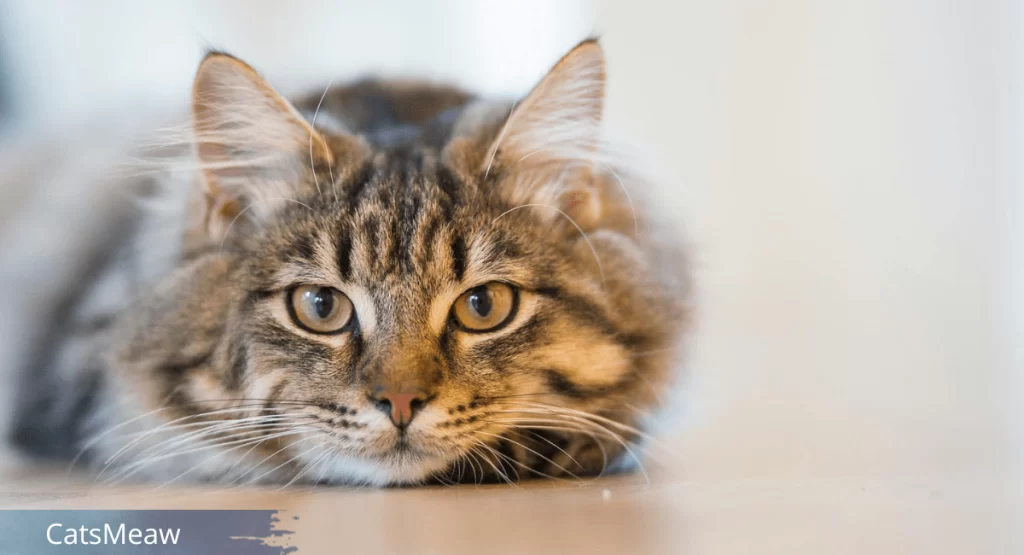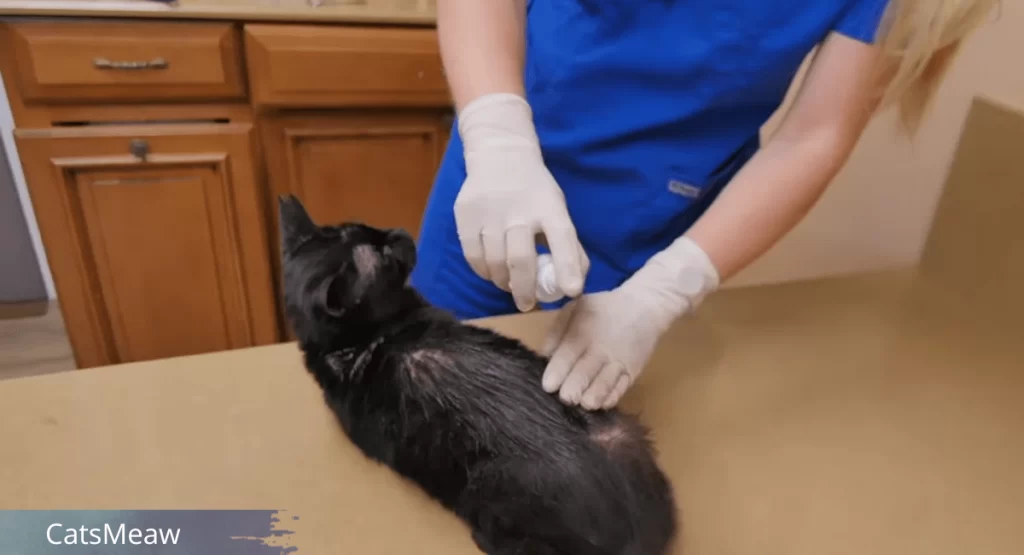When it comes to the health of your cat, few things are as concerning as a persistent fungal infection. These infections can be painful, uncomfortable, and potentially dangerous if left untreated. Fortunately, there’s a reliable treatment available: Itrafungol for cats. This powerful antifungal medication is specifically designed to combat common fungal infections in cats, providing a much-needed solution for concerned pet owners.

In this article, we’ll explore everything you need to know about Itrafungol for cats, from how it works to how it should be administered. By the end, you’ll have a thorough understanding of why this medication is so effective and how it can help your cat recover from fungal infections.
Table of Contents
What is Itrafungol?
Itrafungol for cats is a veterinary antifungal medication that contains the active ingredient itraconazole. Itraconazole is a potent antifungal agent that is commonly used to treat a variety of fungal infections in both humans and animals. In cats, Itrafungol is primarily used to treat infections caused by dermatophytes, a type of fungus that affects the skin, hair, and nails.
This medication is particularly effective against ringworm, a highly contagious fungal infection that is common in cats, especially kittens. However, Itrafungol for cats is also effective against other types of fungal infections, making it a versatile tool in the fight against feline fungal diseases.
How Itrafungol Works
The active ingredient in Itrafungol for cats, itraconazole, works by inhibiting the synthesis of ergosterol, a critical component of fungal cell membranes. Without ergosterol, the fungal cells become unstable, leading to their eventual death. This mechanism of action makes Itrafungol highly effective in eliminating fungal infections, allowing your cat’s skin and coat to heal.
Our pick: The Best itrafungol oral solution for cats
What sets Itrafungol apart from other antifungal medications is its targeted action. Unlike some treatments that can affect healthy cells as well as infected ones, Itrafungol for cats is specifically designed to attack fungal cells, minimizing the risk of side effects and ensuring that the medication is both safe and effective.
Common Fungal Infections in Cats
Fungal infections can manifest in various ways, depending on the type of fungus involved. Some of the most common fungal infections in cats include:
- Ringworm: Despite its name, ringworm is not a worm but a fungal infection. It causes circular, scaly patches of hair loss, and it’s highly contagious. Itrafungol for cats is particularly effective in treating this condition.
- Aspergillosis: This infection is caused by the Aspergillus fungus and can affect the nasal passages, sinuses, and sometimes the lungs. It’s more common in dogs but can occur in cats as well.
- Cryptococcosis: Caused by the Cryptococcus fungus, this infection can affect the respiratory system and, in severe cases, the central nervous system.
Each of these infections requires prompt and effective treatment to prevent complications, and Itrafungol for cats is a reliable choice for many of these conditions.
When to Use Itrafungol for Cats
It’s important to recognize the signs of a fungal infection early so that treatment can begin as soon as possible. Symptoms of fungal infections in cats can vary but often include:
- Patches of hair loss
- Red, scaly skin
- Itching and discomfort
- Crusting or thickened skin
- Discharge from the nose or eyes (in cases of nasal infections)
If you notice any of these symptoms in your cat, it’s essential to consult your veterinarian. They can perform tests to confirm the presence of a fungal infection and determine whether Itrafungol for cats is the appropriate treatment.
Related: Homemade Cat Food: Delicious and Healthy Meals
Dosage and Administration of Itrafungol for Cats
The dosage and administration of Itrafungol for cats are straightforward, but it’s crucial to follow your veterinarian’s instructions closely to ensure effective treatment. The medication is typically administered orally using a syringe or dropper, which makes it easy to give to your cat.
- Recommended Dosage: The standard dosage of Itrafungol for cats is 5 mg of itraconazole per kilogram of body weight, administered once daily. The treatment usually lasts for several weeks, depending on the severity of the infection.
- How to Administer: To administer the medication, measure the correct dose in the syringe provided, and gently squirt it into your cat’s mouth. It’s best to do this slowly to avoid choking or spitting out the medication.
- Treatment Duration: The duration of treatment with Itrafungol for cats can vary. In most cases, it’s given for seven consecutive days, followed by a break, and then repeated for another week. Your veterinarian will determine the exact schedule based on your cat’s condition.
Consistency is key when administering Itrafungol for cats.

Make sure to give the medication at the same time each day, and complete the entire course of treatment, even if your cat’s symptoms improve before the medication is finished.
Potential Side Effects of Itrafungol for Cats
While Itrafungol for cats is generally safe and well-tolerated, it’s important to be aware of potential side effects. Most cats experience little to no side effects, but some may experience mild reactions, such as:
- Vomiting or nausea
- Loss of appetite
- Diarrhea
- Lethargy
These side effects are usually temporary and resolve on their own. However, if your cat shows signs of a more severe reaction, such as difficulty breathing, swelling, or jaundice (yellowing of the skin or eyes), you should contact your veterinarian immediately.
It’s also important to inform your veterinarian of any other medications your cat is taking, as Itrafungol for cats can interact with certain drugs, leading to adverse effects.
Precautions and Considerations
Before starting treatment with Itrafungol for cats, there are several precautions and considerations to keep in mind:
- Use in Pregnant or Nursing Cats: Itrafungol should be used with caution in pregnant or nursing cats. While there is limited evidence of harm, it’s always best to consult your veterinarian to weigh the risks and benefits.
- Interactions with Other Medications: Itrafungol can interact with certain medications, such as some antibiotics and antacids. Make sure your veterinarian is aware of all the medications your cat is currently taking.
- Senior Cats: Older cats may have a harder time metabolizing certain medications. If your cat is a senior, your veterinarian may adjust the dosage of Itrafungol for cats accordingly.
By following these precautions, you can help ensure that your cat’s treatment with Itrafungol for cats is both safe and effective.
Effectiveness of Itrafungol for Cats
The effectiveness of Itrafungol for cats in treating fungal infections is well-documented. Clinical studies and veterinary reports have shown high success rates, particularly in the treatment of ringworm. Most cats respond well to the medication, with significant improvement often seen within the first week of treatment.
In addition to its effectiveness, Itrafungol for cats is praised for its ease of administration. The liquid formulation is palatable for most cats, which makes it easier for pet owners to ensure that their cat receives the full dose.
It’s important to note that while Itrafungol for cats is highly effective, it’s not a one-size-fits-all solution. Some fungal infections may be resistant to treatment, or your cat may have a condition that requires a different approach. Always consult your veterinarian to determine the best course of action for your cat.
Alternatives to Itrafungol
While Itrafungol for cats is a popular choice, there are other antifungal medications available that may be recommended depending on your cat’s specific needs. Some alternatives include:
- Griseofulvin: Another antifungal medication commonly used to treat ringworm. It’s often prescribed in cases where Itrafungol may not be suitable.
- Terbinafine: This medication is used to treat a variety of fungal infections and can be an alternative for cats that do not tolerate Itrafungol well.
- Topical Treatments: In some cases, a combination of oral and topical treatments may be recommended for more severe infections.
Natural remedies, such as apple cider vinegar or coconut oil, are sometimes suggested by pet owners, but these should never replace prescribed medications like Itrafungol for cats. Always consult your veterinarian before trying any alternative treatments.
Where to Buy Itrafungol for Cats
Itrafungol for cats is a prescription medication, so you’ll need to obtain it from your veterinarian or a licensed pharmacy. It’s essential to purchase the medication from a reputable source to ensure that you’re getting a genuine product.
- Prescription Requirements: Your veterinarian will provide a prescription for Itrafungol based on your cat’s diagnosis. Make sure to follow their instructions carefully.
- Trusted Sources: You can purchase Itrafungol for cats from your veterinarian’s office , a local pharmacy, or an online pet pharmacy as well as amazon. Be cautious when buying medications online, and always choose a pharmacy that requires a prescription.
Related: Cat Not Eating: Causes & Treatments
Frequently Asked Questions About Itrafungol for Cats
Q: How long does it take for Itrafungol to work? A: Most cats start to show improvement within a week of starting treatment. However, it’s important to complete the full course of medication to ensure the infection is fully eradicated.
Q: Can Itrafungol be used for other pets? A: Itrafungol is specifically formulated for cats and should not be used in other
